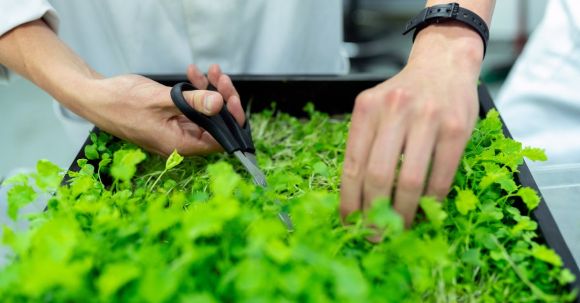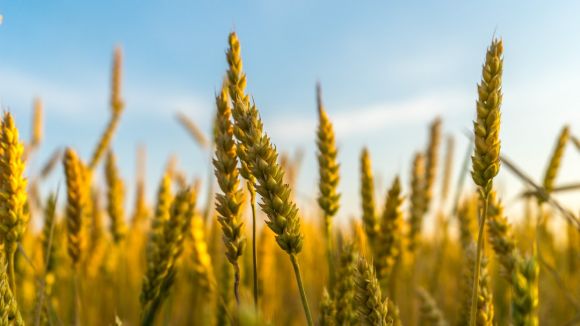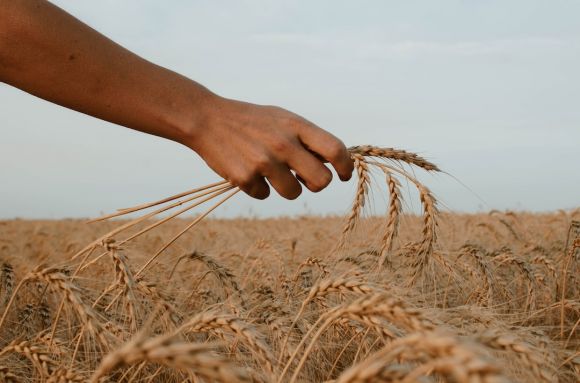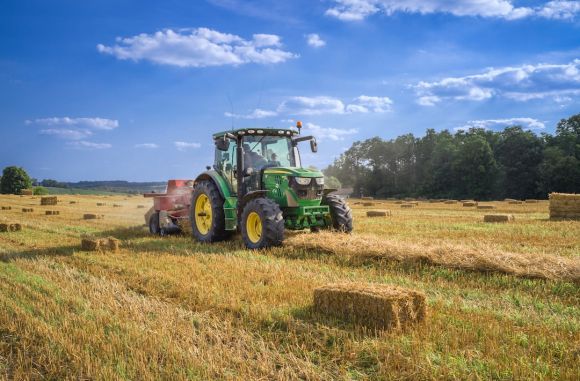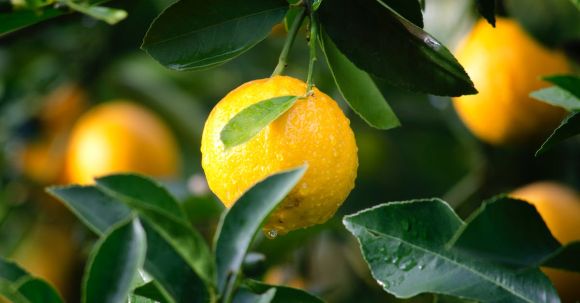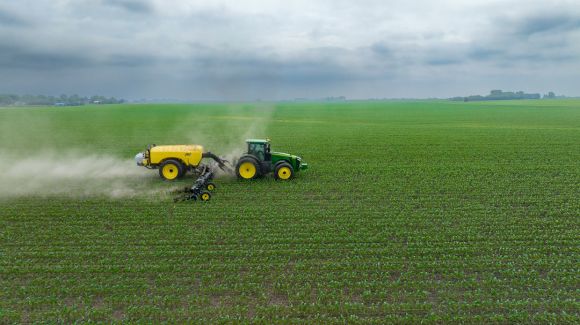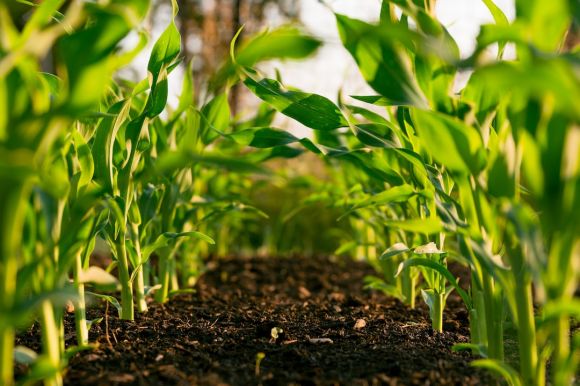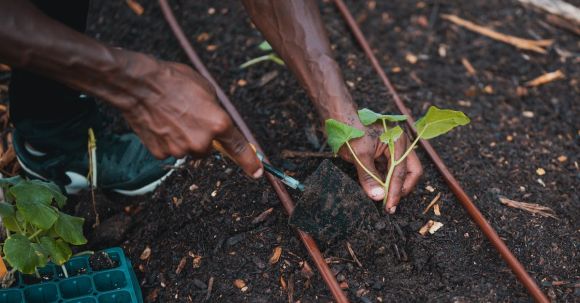Introduction Sustainable farming practices are crucial for maintaining a healthy environment and ensuring the long-term viability of agriculture. One of the major challenges faced by farmers today is nutrient runoff, which occurs when excessive nutrients from agricultural fields are carried away by rainwater and end up in nearby water bodies. This can lead to water pollution, harmful algal blooms, and the degradation of aquatic ecosystems. To prevent nutrient runoff and promote sustainable farming, it is essential to implement best management practices (BMPs) that minimize the use of fertilizers and protect water quality. 1. Soil Testing and Nutrient Management Planning Before applying any fertilizers, farmers should conduct regular soil testing to assess the nutrient content and pH levels of their fields. This information helps them determine the appropriate amount and type of fertilizers needed for optimal crop growth. By following a nutrient management plan, farmers can avoid over-application and minimize the risk of nutrient runoff. 2. Precision Agriculture Techniques Precision agriculture involves the use of technology to precisely apply fertilizers and other inputs, such as water and pesticides, based on the specific needs of each area within a field. This approach minimizes the potential for excess nutrients to be applied in … Read More
Author: aganswers
The health of crops is crucial for the success of any agricultural endeavor. One of the major threats to crop health is foliar diseases, which can cause significant yield losses if not managed effectively. In this article, we will explore some key solutions for preventing foliar diseases and improving crop foliar health. Understanding Foliar Diseases Before delving into the solutions, it is important to have a basic understanding of foliar diseases. Foliar diseases are caused by various pathogens, including fungi, bacteria, and viruses, which infect the leaves of plants. These diseases often manifest as spots, blights, or discoloration on the leaves, impacting the overall health and productivity of the crop. Crop Rotation Crop rotation is a time-tested method for disease prevention in agriculture. By rotating crops, farmers can disrupt the life cycles of pathogens and reduce the buildup of disease-causing organisms in the soil. Different crops have varying susceptibility to specific diseases, so rotating crops can help break the disease cycles and minimize the risk of foliar diseases. Planting Disease-Resistant Varieties Plant breeders have developed disease-resistant crop varieties that can withstand or tolerate specific foliar diseases. By planting disease-resistant varieties, farmers can significantly reduce the risk of foliar diseases and … Read More
Farming is a challenging and unpredictable profession. One of the biggest concerns for farmers is the potential loss of crops due to various factors such as pests, diseases, extreme weather conditions, and improper farming practices. These crop losses not only impact the livelihood of farmers but also have a significant effect on food production and availability. However, with advancements in technology and innovative solutions, farmers now have access to tools and methods that can help minimize crop losses and ensure a more sustainable and profitable farming experience. 1. Precision Agriculture: A Game-Changer Precision agriculture, also known as smart farming, is a revolutionary approach that utilizes technology to optimize farming practices. Through the use of sensors, drones, and GPS, farmers can gather data about their fields, including soil moisture levels, nutrient content, and plant health. This data is then analyzed to make informed decisions regarding irrigation, fertilization, and pest control, thereby minimizing crop losses. 2. Integrated Pest Management: A Sustainable Approach Pests pose a significant threat to crop yields, and conventional pesticide use can have adverse effects on the environment and human health. Integrated Pest Management (IPM) offers an alternative approach that focuses on preventive measures and biological control methods. By … Read More
In the world of agriculture, disease prevention is crucial for the success of crop production. Failing to address and control diseases can lead to devastating consequences, such as reduced yields and significant financial losses for farmers. However, with proactive measures and the implementation of effective strategies, farmers can minimize the impact of diseases on their crops. In this article, we will explore some proactive solutions that farmers can employ to prevent diseases in their crops. Understanding the Importance of Disease Prevention Before delving into specific solutions, it is essential to understand why disease prevention is vital in crop production. Diseases can be caused by various factors, including fungi, bacteria, viruses, and pests. When left unchecked, these diseases can quickly spread and cause significant damage to crops, resulting in reduced quality and quantity of the harvest. Furthermore, diseases can also affect the overall health of plants, making them more susceptible to other environmental stresses. By implementing proactive disease prevention measures, farmers can safeguard their crops and ensure a healthy and abundant harvest. Crop Rotation and Diversification One of the most effective ways to prevent diseases in crops is through crop rotation and diversification. Planting the same crop in the same location … Read More
Agriculture is a vital industry that sustains human life and ensures food security. As the global population continues to grow, the demand for high-quality crops is increasing. To meet this demand, farmers must employ advanced techniques that enhance crop quality. In this article, we will explore some innovative methods that farmers can adopt to improve the quality of their crops. Precision Agriculture: A Game-Changer Precision agriculture is a revolutionary approach that allows farmers to optimize their farming practices using technology. By utilizing advanced tools such as GPS, sensors, and drones, farmers can gather accurate data about their fields. This data helps them make informed decisions regarding irrigation, fertilization, and pest control, resulting in improved crop quality. Utilizing Soil Testing and Analysis Soil testing and analysis play a crucial role in determining the nutrient levels and pH balance of the soil. By conducting regular soil tests, farmers can identify any deficiencies or imbalances in the soil composition. Based on the test results, farmers can then apply the appropriate fertilizers and soil amendments to optimize the nutrient levels. This ensures that crops receive the necessary nutrients, leading to healthier plants and higher crop quality. Implementing Integrated Pest Management (IPM) Pests can have … Read More
As the global population continues to rise, the demand for food production is increasing at an alarming rate. In order to meet this demand, it is crucial to adopt sustainable agricultural practices that optimize crop management. By implementing innovative solutions, farmers can not only enhance their crop yields but also ensure the long-term viability of their farms. In this article, we will explore some key strategies for sustainable agriculture and discuss their benefits. Integrated Pest Management: A Holistic Approach One of the major challenges in crop management is dealing with pests and diseases. Conventional methods often rely heavily on chemical pesticides, which can have detrimental effects on the environment and human health. Integrated Pest Management (IPM) offers a more sustainable and holistic approach. By combining various pest control strategies, such as biological control, crop rotation, and the use of resistant varieties, farmers can effectively manage pests while minimizing the use of harmful chemicals. Precision Agriculture: Technology at its Best Advancements in technology have revolutionized the way we approach agriculture. Precision agriculture, also known as smart farming, utilizes various technologies, including GPS, sensors, and drones, to optimize crop management. By collecting and analyzing real-time data on soil conditions, weather patterns, and … Read More
In today's rapidly evolving agricultural landscape, farmers are constantly seeking innovative solutions to enhance their crop management practices. With the advent of technology, farmers now have access to a wide range of tools and applications that can significantly improve the efficiency and productivity of their operations. In this article, we will explore some of the most exciting technological advancements in crop management and how they are revolutionizing farming practices. Real-Time Monitoring and Data Collection One of the key challenges faced by farmers is the ability to accurately monitor and gather data about their crops. Traditional methods of manual monitoring can be time-consuming and prone to errors. However, with the use of technology, farmers can now rely on real-time monitoring systems to collect data on various aspects of crop growth and health. Satellite imaging and remote sensing technologies have made it possible to monitor crops from space. This allows farmers to detect early signs of stress, such as nutrient deficiencies or water scarcity, and take immediate action to mitigate the issue. Additionally, sensors and drones equipped with advanced imaging technology can provide detailed information about crop health, soil moisture levels, and pest infestations. This data can be analyzed to make informed … Read More
Crop stress is a common concern for farmers and agriculturalists worldwide. It refers to the negative impact of environmental factors on the growth and development of crops, leading to reduced yields and economic losses. However, with proper management strategies, farmers can minimize the effects of stress and promote optimal crop growth. In this article, we will explore some effective strategies for managing crop stress. Understanding Crop Stress Before delving into the strategies, it is essential to understand the various types of crop stress. Environmental factors such as drought, heat, cold, flooding, salinity, and nutrient deficiencies are among the primary sources of stress. Additionally, biotic factors such as pests, diseases, and weeds can also cause stress in crops. By identifying the specific stressors affecting their crops, farmers can tailor their management practices accordingly. Optimizing Soil Health Healthy soil is the foundation for robust crop growth and stress tolerance. Farmers should focus on improving soil fertility and structure through practices such as soil testing, proper nutrient management, and organic matter addition. Implementing crop rotation and cover cropping can also help enhance soil health, reduce erosion, and increase water-holding capacity, mitigating the effects of stress. Irrigation Management Water scarcity is a significant stressor … Read More
Introduction Sustainable farming is a crucial aspect of ensuring food security and environmental stewardship. To achieve sustainable agriculture practices, crop management strategies play a vital role. These strategies encompass a range of techniques and practices aimed at optimizing crop production while minimizing negative impacts on the environment. In this article, we will explore some key crop management strategies that farmers can adopt to ensure sustainable farming. Crop Rotation: Enhancing Soil Health and Reducing Pest Pressure Crop rotation is a widely used technique that involves growing different crops in a sequence on the same piece of land. This practice helps to break pest and disease cycles, as different crops have varying susceptibility to pests and diseases. Additionally, crop rotation helps improve soil health by enhancing nutrient availability and reducing soil erosion. By rotating crops, farmers can replenish soil nutrients and reduce the need for synthetic fertilizers, thus minimizing the environmental impact of farming. Integrated Pest Management: Minimizing Chemical Inputs Integrated Pest Management (IPM) is an approach that combines various pest control methods to minimize the use of chemical pesticides. This strategy involves monitoring pest populations, using natural predators and beneficial insects, implementing cultural practices, and only resorting to chemical pesticides as … Read More
In a world where climate change is becoming increasingly evident, farmers are facing the challenge of growing crops in environments that are becoming more unpredictable and challenging. However, with the advancement of technology and the development of innovative farming practices, there are solutions available to help increase crop adaptability and ensure food security for future generations. In this article, we will explore some of these solutions and how they can be implemented. 1. Drought-Tolerant Crop Varieties One of the biggest challenges faced by farmers in arid regions is drought. To address this issue, scientists have developed drought-tolerant crop varieties. These varieties are genetically modified to have enhanced water-use efficiency, allowing them to survive and thrive in water-limited conditions. By planting these varieties, farmers can significantly reduce water consumption and increase crop productivity in drought-prone areas. 2. Precision Agriculture Precision agriculture is a farming technique that utilizes advanced technologies such as GPS, remote sensing, and data analytics to optimize crop production. By collecting data on soil moisture levels, nutrient content, and plant health, farmers can make informed decisions about irrigation, fertilization, and pest control. This not only increases crop adaptability but also minimizes resource wastage, making farming more sustainable. 3. Vertical … Read More
Pests are a constant threat to agricultural crops, causing significant damage and loss of yield if left unchecked. Early detection of pests is crucial for effective crop protection and increased productivity. In this article, we will explore the importance of pest monitoring and the various techniques that can be utilized for early detection. The Importance of Pest Monitoring Pest monitoring plays a vital role in integrated pest management (IPM) strategies. By regularly monitoring crops for pests, farmers can identify potential problems before they become widespread and take appropriate action. Early detection allows for targeted interventions, reducing the need for excessive pesticide use and minimizing environmental impact. Visual Inspection Visual inspection is one of the simplest and most cost-effective ways to monitor pests. Farmers can walk through their fields regularly, observing plants for any signs of pest damage, such as chewed leaves, wilting, or discoloration. By monitoring crops at different growth stages, farmers can identify specific pests that are more prevalent at certain times and implement targeted control measures. Pheromone Traps Pheromone traps are another useful tool for monitoring pests. Pheromones are chemical substances emitted by insects to communicate with others of the same species. By strategically placing pheromone traps in … Read More
Timing is everything when it comes to harvesting crops. The difference of a few days can make all the difference in the quality and quantity of your yield. To maximize your harvest, it is crucial to employ advanced techniques that focus on optimizing the timing of your harvest. In this article, we will explore some of these techniques and how they can help you achieve the highest possible yield. Understanding Crop Maturity Before diving into the various techniques, it is essential to have a solid understanding of crop maturity. Different crops have different indicators of maturity, such as color, texture, size, and even smell. By closely monitoring these indicators, you can determine the ideal time for harvesting. Technique 1: Monitoring Growing Degree Days Growing Degree Days (GDD) is a measure of heat accumulation over time and is an excellent tool for tracking crop maturity. By monitoring the GDD for your specific crop, you can estimate when it will reach its optimal maturity stage. This information allows you to plan your harvest accordingly, ensuring maximum yield. Technique 2: Regular Field Inspections Regular inspections of your crops are crucial for identifying signs of maturity. By closely examining the plants, you can look … Read More
Healthy roots are the foundation of strong and productive plants. They are responsible for nutrient uptake, water absorption, and provide stability to plants. However, many factors can hinder root health, leading to stunted growth and reduced yields. In this article, we will explore strategies to enhance crop root health and ensure the vitality of your plants. Understanding Root Health Before diving into strategies for enhancing root health, it is important to understand the factors that can affect it. Soil quality, nutrient availability, water management, and disease pressure are some of the key elements that influence root health. By addressing these factors, we can create an optimal environment for root development and overall plant growth. Improving Soil Quality The first step in enhancing root health is to improve the quality of the soil. Soil should be well-draining, loose, and rich in organic matter. This can be achieved by incorporating compost or other organic amendments into the soil. These additions improve soil structure, promote beneficial microbial activity, and enhance nutrient availability for the roots. Optimizing Nutrient Availability Nutrient availability is crucial for root health and overall plant growth. Conducting a soil test can help identify nutrient deficiencies or imbalances, allowing for targeted … Read More
Introduction Crop root absorption is a critical process that determines the nutrient uptake efficiency of plants. A well-developed root system with enhanced absorption capabilities can significantly improve crop productivity and yield. In this article, we will explore various strategies to enhance crop root absorption, focusing on innovative techniques and practices that can promote better nutrient uptake in plants. Understanding the Root System Before delving into the strategies, it is essential to understand the root system and its role in nutrient absorption. The root system consists of primary and lateral roots, which extend into the soil, absorbing water and nutrients. The root hairs, tiny extensions of the root surface, are crucial for nutrient uptake. They increase the surface area for absorption, allowing plants to access a larger pool of nutrients. 1. Soil Health and Nutrient Availability To enhance crop root absorption, it is vital to optimize soil health and nutrient availability. Soil pH, organic matter content, and nutrient levels significantly influence the availability of essential elements. Regular soil testing helps identify any deficiencies or imbalances, allowing for targeted fertilizer applications. By maintaining optimal soil conditions, we can ensure that the nutrients are readily available for root absorption. 2. Balanced Fertilization Balanced … Read More
Successful crop establishment is crucial for achieving high yields and maximizing profitability in agriculture. One of the key factors that determine crop establishment is efficient seed placement. In this article, we will explore the importance of optimizing seed placement and discuss strategies to achieve it. Why is seed placement important? Proper seed placement plays a vital role in ensuring uniform emergence, which is essential for achieving optimum plant populations and maximizing crop yields. When seeds are placed at the correct depth and spacing, they have better access to moisture and nutrients, resulting in healthier and more vigorous seedlings. Additionally, uniform emergence reduces competition among plants and allows for more efficient weed control. Factors to consider for efficient seed placement 1. Seed depth: The depth at which seeds are planted can significantly impact germination and emergence. Planting seeds too shallow can expose them to environmental stressors, such as temperature fluctuations and desiccation. On the other hand, planting seeds too deep may restrict access to light and oxygen, hindering germination. It is essential to consider the specific requirements of each crop and adjust seed depth accordingly. 2. Seed spacing: Proper seed spacing ensures that each plant has enough space to grow and … Read More
As the global population continues to grow, the demand for food is increasing at an unprecedented rate. Farmers around the world are facing the challenge of producing higher yields to meet this demand. However, traditional farming practices are often not sufficient to achieve these goals. In order to enhance crop yields and ensure food security, farmers are turning to innovative solutions that leverage technology, sustainable practices, and data-driven decision-making. Precision Agriculture: A Game-Changer for Farmers Precision agriculture is revolutionizing the way farmers approach crop production. By utilizing advanced technologies such as GPS, remote sensing, and data analytics, farmers are able to make more informed decisions about planting, fertilizing, and irrigation. This allows them to optimize resource allocation and increase crop yields. For example, through the use of precision agriculture, farmers can precisely apply fertilizers and pesticides only where they are needed, reducing waste and environmental impact. The Power of Big Data in Farming The collection and analysis of large amounts of data have become a game-changer for farmers. By harnessing the power of big data, farmers can gain valuable insights into crop performance, soil health, and weather patterns. This information enables them to make data-driven decisions and implement targeted interventions … Read More
Introduction: Fertilizer application plays a crucial role in ensuring the health and productivity of crops. However, applying excessive or insufficient amounts of fertilizer can have detrimental effects on both crop yield and the environment. To optimize fertilizer application and achieve the best results, it is essential to understand the nutrient requirements of different crops and employ appropriate strategies. Understanding Crop Nutrient Requirements: Different crops have varying nutrient requirements, and it is important for farmers to be aware of these needs. Essential macronutrients include nitrogen (N), phosphorus (P), and potassium (K), while micronutrients such as iron, zinc, and manganese are also critical for plant growth. By conducting soil tests and analyzing crop nutrient deficiencies, farmers can determine which nutrients are lacking and adjust fertilizer application accordingly. Applying the Right Fertilizer Types: Once the nutrient requirements of a specific crop are identified, it is necessary to choose the appropriate fertilizer types. Different fertilizers contain varying ratios of macronutrients and micronutrients. For example, a fertilizer labeled as 10-5-5 contains 10% nitrogen, 5% phosphorus, and 5% potassium. By selecting fertilizers that match the specific nutrient deficiencies, farmers can avoid over- or under-application of certain nutrients. Consideration of Soil Conditions: Soil conditions play a significant … Read More
Weeds are a common problem that farmers face when cultivating crops. These unwanted plants not only compete for nutrients, sunlight, and water but also serve as hosts for pests and diseases. Therefore, it is crucial to effectively manage and remove weeds to ensure the health and productivity of crops. In this article, we will explore some effective methods for weed removal and discuss their benefits. Mulching: A Natural Weed Barrier Mulching is an effective and natural method of controlling weeds in crops. By applying a layer of organic materials such as straw, wood chips, or compost on the soil surface, weeds are suppressed and prevented from germinating and growing. Mulching also helps to retain soil moisture, regulate temperature, and improve soil fertility. It acts as a physical barrier that inhibits weed growth, reducing the need for manual weeding or herbicide application. Crop Rotation: Disrupting Weed Life Cycles Crop rotation is an age-old practice that not only benefits the soil but also helps in weed management. By rotating different crops in a specific sequence, the life cycles of weeds are disrupted, making it difficult for them to establish and spread. This method reduces the buildup of weed populations, as different crops … Read More
As farmers strive to enhance crop yields and improve overall agricultural productivity, maximizing fertilizer efficiency becomes a critical component of successful crop nutrition. By understanding and implementing best practices in fertilizer management, farmers can optimize nutrient uptake, minimize losses, and ultimately achieve higher yields. In this article, we will explore some key strategies that can help farmers maximize fertilizer efficiency and improve crop nutrition. Soil Testing: The Foundation for Effective Fertilizer Management Before applying any fertilizers, it is essential to conduct a comprehensive soil test. Soil testing provides valuable information about the nutrient content, pH levels, and organic matter content of the soil. This information helps farmers make informed decisions about the types and quantities of fertilizers required for their crops. By tailoring fertilizer applications to the specific needs of the soil, farmers can avoid over- or under-fertilization, ensuring optimal nutrient uptake by the crops. Precision Application: Targeting Nutrients Where They Are Needed Precision application is a technique that involves applying fertilizers in a precise and targeted manner based on the specific nutrient requirements of different areas within a field. This approach allows farmers to optimize the use of fertilizers by applying them only where they are needed the most. … Read More
In the realm of agriculture, maximizing crop profitability is a constant challenge faced by farmers. With fluctuating market prices, unpredictable weather patterns, and evolving consumer demands, it becomes imperative for farmers to adopt best management practices to ensure their crops yield the highest returns. This article explores some of these practices that can help farmers increase their crop profitability. Soil Health: The Foundation of Profitable Crops Healthy soil is the bedrock of successful crop production. By maintaining optimal soil health, farmers can improve nutrient availability, water retention, and root development. Implementing practices such as crop rotation, cover cropping, and organic matter management can enhance soil fertility and structure. Regular soil testing and analysis can help identify nutrient deficiencies and ensure the right balance of fertilizers is applied. By investing in soil health, farmers can optimize their crop yields and ultimately increase profitability. Precision Agriculture: Harnessing Technology for Greater Efficiency Precision agriculture utilizes technology to optimize farm management practices. By using tools such as GPS, remote sensing, and data analytics, farmers can make informed decisions regarding crop inputs, irrigation, and pest management. Precision agriculture enables farmers to apply fertilizers and pesticides more accurately, reducing waste and increasing cost-effectiveness. Utilizing this technology … Read More
A successful harvest is only the beginning of a farmer's journey. To maximize the value of their hard work, it is crucial to store crops properly for long-term preservation. Effective crop storage not only ensures a longer shelf life but also maintains the quality and nutritional value of the produce. In this article, we will explore some best practices for enhancing crop storage. Understanding Crop Characteristics Before diving into the specific techniques, it is essential to understand the characteristics of the crops being stored. Different crops have different requirements for storage, including temperature, humidity, and ventilation. For instance, root vegetables like carrots and potatoes prefer cool and moist conditions, while fruits like apples and oranges require cooler temperatures but lower humidity. By understanding these nuances, farmers can customize their storage strategies accordingly. Temperature and Humidity Control One of the most critical factors in crop storage is maintaining the right temperature and humidity levels. Generally, a cool and dry environment is ideal for most crops. This helps slow down the ripening process and prevents the growth of mold and bacteria. However, it is important to note that each crop has its own specific temperature and humidity requirements. By investing in temperature … Read More
The agricultural industry plays a critical role in feeding the growing global population. However, the sector is faced with numerous challenges, including unpredictable weather patterns, pest outbreaks, and limited natural resources. To overcome these challenges and ensure food security, it is essential to enhance crop resilience through advanced management techniques. In this article, we will explore some of the innovative strategies that farmers can employ to improve the resilience of their crops. Diversification of Crop Species One effective way to enhance crop resilience is through the diversification of crop species. Planting a variety of crops on the same piece of land can help reduce the risk of total crop failure due to disease outbreaks or adverse weather conditions. By including different species with varying growth habits and nutritional requirements, farmers can create a more resilient agricultural system. Additionally, crop diversity can also improve soil health and reduce the dependence on synthetic fertilizers and pesticides. Precision Agriculture Precision agriculture is another advanced management technique that can significantly enhance crop resilience. This approach involves using technology, such as remote sensing and global positioning systems (GPS), to monitor and manage crops with precision. By analyzing data on soil moisture levels, nutrient content, and … Read More
Crop diseases can have devastating effects on agricultural production, leading to significant yield losses and economic hardship for farmers. Traditional methods of disease control, such as chemical pesticides, have proven to be effective but can pose risks to the environment and human health. In recent years, there has been a growing interest in innovative techniques that offer sustainable and eco-friendly alternatives for managing crop diseases. In this article, we will explore some of these innovative techniques that farmers can adopt to control crop diseases effectively. Crop Rotation: A Natural Defense Crop rotation is a centuries-old practice that involves growing different crops in sequential seasons on the same piece of land. This technique can help break the disease cycle by interrupting the life cycle of pathogens that rely on specific host plants. By rotating crops, farmers can prevent the buildup of disease-causing organisms in the soil, reducing the need for chemical interventions. Additionally, crop rotation can improve soil health and fertility, leading to overall better crop growth and resilience against diseases. Biological Control: Nature's Allies Biological control involves the use of natural enemies, such as beneficial insects or microorganisms, to suppress the population of pests or pathogens. One example of biological … Read More
Effective crop rotation is a key practice in sustainable farming that can help improve soil health, prevent pest and disease outbreaks, and increase crop yields. By strategically planning the rotation of crops, farmers can optimize their land use and maintain the long-term productivity of their fields. In this article, we will explore some strategies for easy and effective crop rotation planning. Understanding the Basics of Crop Rotation Crop rotation involves the systematic planting of different crops in a specific sequence over a defined period. The goal is to break the cycle of pests and diseases that can build up when the same crop is grown in the same location year after year. Additionally, different crops have varying nutrient requirements, allowing for better nutrient cycling and ultimately enhancing soil fertility. Choosing Crop Groups To start planning your crop rotation, it is essential to categorize crops into different groups based on their botanical families. This categorization helps identify crops that have similar nutrient requirements and are susceptible to the same pests and diseases. By rotating crops within these groups, you can effectively manage pest and disease pressure while maintaining soil fertility. Creating a Rotation Schedule Once you have classified your crops into … Read More
The success of any agricultural endeavor relies heavily on the efficient harvesting of crops. Maximizing crop yield not only ensures a profitable harvest but also plays a vital role in feeding a growing global population. Farmers and agriculturalists are continually seeking ways to optimize crop harvest, employing innovative techniques to increase productivity. In this article, we will explore some efficient techniques that can be employed to achieve maximum crop output. 1. Soil Preparation and Nutrient Management Before planting crops, it is essential to prepare the soil adequately. Soil testing should be conducted to determine its nutrient content and pH levels. Based on the results, appropriate fertilizers and soil amendments can be applied to optimize nutrient availability. The use of organic matter, such as compost or manure, can improve soil structure, water retention, and overall fertility. This ensures that crops have access to the necessary nutrients for healthy growth and maximum yield. 2. Crop Rotation and Diversification Crop rotation involves the systematic planting of different crops in a specific sequence over several seasons. This technique helps break the cycle of pests and diseases that may affect a particular crop. Additionally, rotating crops with different nutrient requirements helps prevent soil depletion. Diversification, … Read More
Water is a precious resource, and its scarcity is becoming a growing concern worldwide. Agriculture is one of the biggest consumers of water, accounting for approximately 70% of global freshwater withdrawals. In light of this, it is crucial for farmers to adopt efficient irrigation techniques that can help reduce water usage without compromising crop yields. In this article, we will explore some effective methods that can be employed to achieve this goal. Drip Irrigation: A Precise Solution Drip irrigation is a highly efficient technique that delivers water directly to the roots of plants. Unlike traditional overhead sprinklers, which can result in significant water loss due to evaporation and runoff, drip irrigation ensures that water is applied precisely where it is needed. By using a network of tubes and emitters, water is released slowly and steadily, allowing plants to absorb it more effectively. This technique not only minimizes water waste but also helps prevent weed growth and disease spread, as the foliage remains dry. Micro-Sprinklers: Balancing Efficiency and Coverage Micro-sprinklers are an excellent alternative to conventional sprinkler systems. These devices emit water in a fine mist, reducing evaporation losses and providing more uniform coverage compared to traditional sprinklers. They are particularly … Read More
Enhancing crop root development is crucial for achieving higher yields and ensuring sustainable agriculture. Roots are responsible for nutrient uptake, water absorption, and anchoring the plants in the soil. In this article, we will explore advanced management techniques that can be employed to improve crop root development. Soil Health and Structure The foundation for healthy root development lies in the soil. A well-structured soil with good fertility and adequate drainage promotes root growth. Regular soil testing and analysis can help identify deficiencies and imbalances, allowing farmers to make informed decisions regarding nutrient management. Implementing organic matter amendments, such as compost or cover crops, can enhance soil structure, increasing water-holding capacity and promoting a healthy soil microbiome. Precision Irrigation Water is a vital resource for plants, and the efficient use of irrigation can greatly impact root development. Precision irrigation techniques, such as drip irrigation or subsurface drip irrigation, deliver water directly to the root zone, minimizing water wastage and reducing the risk of disease. Regular monitoring of soil moisture levels, combined with advanced irrigation scheduling tools, ensures that plants receive the right amount of water at the right time, promoting optimal root growth. Root Zone Temperature Management Root growth is influenced … Read More
When it comes to growing healthy and productive crops, one of the key factors to consider is the nutrient balance in the soil. Plants require a variety of essential nutrients to thrive, and providing these nutrients in the right amounts and ratios is crucial for optimal growth and yield. This is where the choice of fertilizer becomes critical. In this article, we will explore the importance of selecting the right fertilizer and how to achieve the optimal nutrient balance for your crops. Understanding Nutrient Requirements Before delving into the world of fertilizers, it is important to understand the nutrient requirements of different crops. Each plant has specific needs when it comes to nutrients, and these requirements can vary depending on factors such as the crop type, soil type, and stage of growth. The primary nutrients required by plants are nitrogen (N), phosphorus (P), and potassium (K), often referred to as NPK. In addition to these macronutrients, plants also require secondary nutrients such as calcium (Ca), magnesium (Mg), and sulfur (S), as well as micronutrients like iron (Fe), manganese (Mn), zinc (Zn), copper (Cu), boron (B), and molybdenum (Mo). Analyzing Soil Nutrient Levels To determine the nutrient requirements of your crops, … Read More
Weeds are every farmer's worst nightmare. They compete with crops for nutrients, water, and sunlight, reducing the overall yield and quality of the harvest. Controlling weeds is essential for successful crop management, and luckily, there are several expert solutions available to make this task easier. In this article, we will explore some of the most effective weed control methods that farmers can implement to ensure a bountiful and thriving crop. 1. Mulching: The Power of Natural Barriers Mulching is a simple yet effective technique that involves covering the soil around the crop with a layer of organic material, such as straw, wood chips, or leaves. This layer acts as a natural barrier, preventing weeds from germinating and growing. Additionally, mulch helps retain soil moisture, regulates temperature, and improves soil fertility. By implementing mulching techniques, farmers can significantly reduce the need for manual weeding. 2. Crop Rotation: Breaking the Weed Life Cycle Crop rotation is a practice where different crops are planted in a specific sequence in the same field over time. This method disrupts the life cycle of weeds by altering the conditions they need to grow. By rotating crops, farmers can prevent the buildup of weed populations and reduce … Read More
Soil fertility plays a crucial role in ensuring sustainable crop production and food security. However, due to intensive farming practices, improper land management, and environmental degradation, many agricultural soils have become depleted and less productive over time. To address this issue, farmers and researchers are exploring various solutions to enhance soil fertility and promote sustainable crop production. In this article, we will discuss some effective strategies and techniques to improve soil fertility. Cover Crops: A Natural Solution Cover crops are non-cash crops that are planted primarily to improve soil health and fertility. They are known for their ability to suppress weeds, prevent erosion, and increase organic matter content in the soil. Leguminous cover crops, such as clover and vetch, have the additional benefit of fixing nitrogen from the atmosphere and making it available to other plants. By incorporating cover crops into crop rotation systems, farmers can replenish nutrients, improve soil structure, and reduce the need for synthetic fertilizers. Composting: Recycling Organic Waste Composting is a simple and effective method of recycling organic waste and converting it into nutrient-rich soil amendments. By combining various organic materials such as crop residues, animal manures, and kitchen scraps, farmers can create a compost pile … Read More
